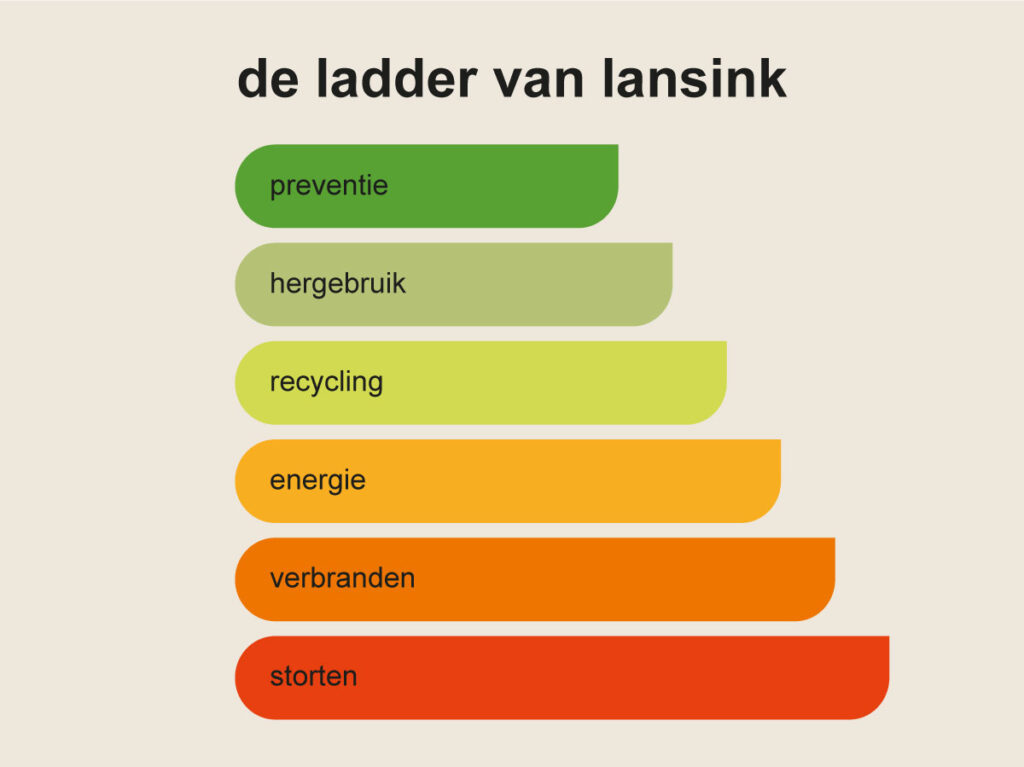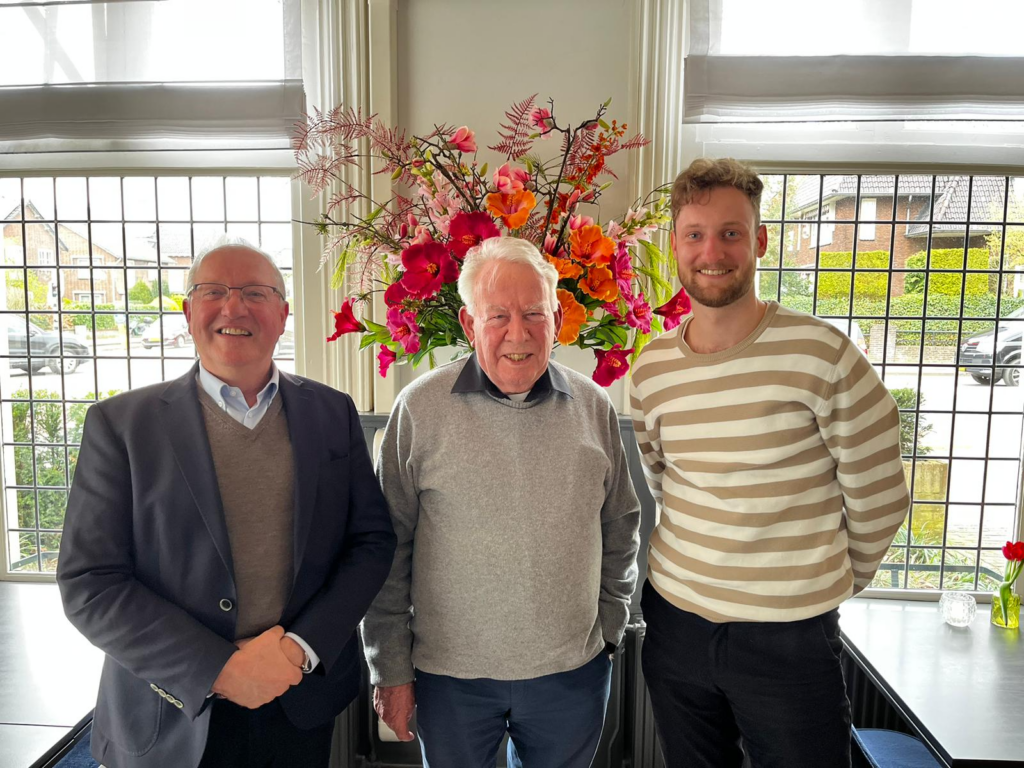
A more sustainable, circular economy is fundamentally different from our current, predominantly linear economy. The R-ladder is a widely used model to show step by step how we can move from the lowest rung (recover) to a circular economy (refuse). This ladder has been used for years by both companies and governments to make sense of initially waste reduction and then circular progress. Eventually, the ladder was translated into the European Waste Frame Directive. The now commonly used R-ladder had its origins in 1979, with Lansink’s Ladder. At Cirmar, we see that Ladder as the foundation of the modern concept of the circular economy. That is why we spoke with its creator – Ad Lansink – about coming up with the Ladder, the resistance he faced and what the future holds.
There is no waste in a fully circular economy, but for Lansink’s Ladder, that is where it all begins. As a former politician, he was active in various roles, like member of parliament for the CDA. He was confronted with the waste problem before that, when he held a seat in the Nijmegen city council. ‘In the 1970s, discount shops were on the rise. Electronics were piled up and sold at extremely low prices: the start of mass consumption.’ But that wasn’t all. ‘In the hospital, I saw doctor’s coats being used once before being disposed at the dump. Near Nijmegen, I saw the rise of waste mountains. That is when I thought: we are moving in the wrong direction.’
In 1977, Lansink was first elected as MP. He saw many politicians in parliament asking one question after another, all to boost their own profile. He decided to do things differently. ‘I focused on two key issues: nitrogen and waste. My ideas on how to deal with waste eventually evolved into Lansink’s Ladder.’

The concept of the ladder started from a list of bullet points, in which Lansink described the different steps you can take with waste. ‘At that time, I did not have the Ladder in mind at all. It was simply a way of putting my thoughts on paper in a structured way. The bottom bullet – or step – is landfill, we have to eliminate this way of disposing waste. The top step – the ideal scenario – is prevention, creating as little waste as possible. Colleagues urged me to turn my bullet points into a motion. It caught on, as spokespersons from all parties signed the list immediately.’ It did take another 15 years before the motion was incorporated into the Environmental Management Act in 1993, a slow process that Lansink attributes to the realities of politics: ‘After it was incorporated into law, reports and plans followed that included the Ladder. These were not always enthusiastically received, especially by companies that benefited from the status quo. That is the political reality: sweeping changes simply meet resistance.’
In the years after tabling the motion, Lansink found that his bullets had transformed into a ladder bearing his name. ‘At conferences or when speaking with companies, people asked if I had coined the term ‘Ladder of Lansink’. Strictly speaking, I didn’t, but I’m glad it caught on, probably partly due the alliteration.’ Those conversations then revealed that only part of the market had an appetite for change. ‘I was invited by companies from different countries to explain my ideas. I received mostly positive reactions there. But some companies indicated that I had mainly saddled them with problems. It called for a change in business models.’

Cirmar spoke to Ad Lansink and reflected on the impact he has had on modern concepts in the circular economy. His work is an inspiration for us, which we use to continue building our tech tools for the circular economy.
According to Lansink, the transition to a circular economy requires patience. ‘The targets set by the Dutch government (50% circular by 2030, fully circular by 2050) are not realistic. Some seem to think that if you say it often enough, it will automatically become reality. I prefer to see a realistic, step-by-step approach where we do what we can.’ He refers to the development of the Lansink Ladder, which also took time. ‘Sticking to an annual number or figures, because that’s a message people want to hear, doesn’t get us anywhere. The problem is that despite good intentions, companies often find it difficult to pull together. At the same time, I think it is great that Frans Timmermans managed to get the ‘Circular Economy Action Plan’ through the European Parliament.’
If targets in numbers are not the answer, what is? ‘Technology is not the problem, neither are the capabilities that business and individuals have. We can already do an awful lot! It’s mainly about awareness. That’s where education has a big role to play. We have to make sure everyone understands that change is needed.’ In that respect, there is plenty of reason to be positive. ‘To paint a realistic picture of the future, we also need to understand that time, place, and function are key aspects of the circular economy. Over the years, the circular economy is becoming an increasingly accepted concept. Depending on the place in the world, you then have to determine what is feasible. Developing countries are likely to emit more, we should not be blind to the fact that we have also benefited from that development.’
In any case, it is clear that 44 years after he drew up the Ladder in bullet points, Lansink still sees a bright future for the circular economy. He sees a lot of resistance, which we can only curb with awareness. Technically, we have enough in place to realise a circular future and everyone needs to take responsibility. Governments by building on the foundation he laid in 1979, companies and consumers by ‘doing what we can’.
Do you want to contribute to the transition to a circular economy? Get started with our tech tools, for free! If you want to know more, reach us via our contact page or browse our website to find out all you need to know about digital product passports and the circular economy.